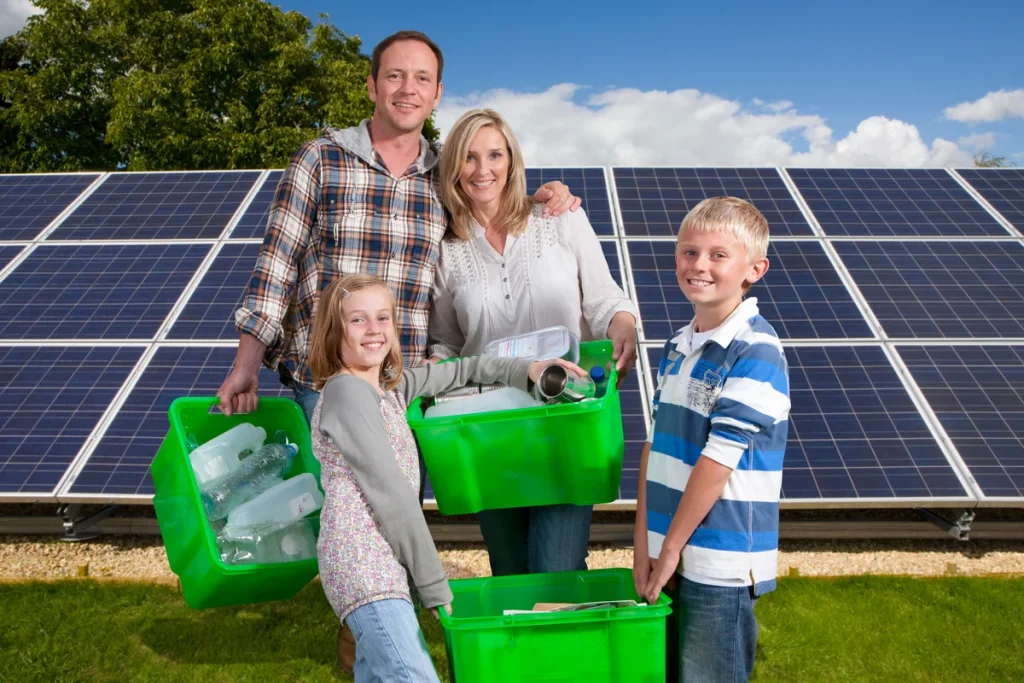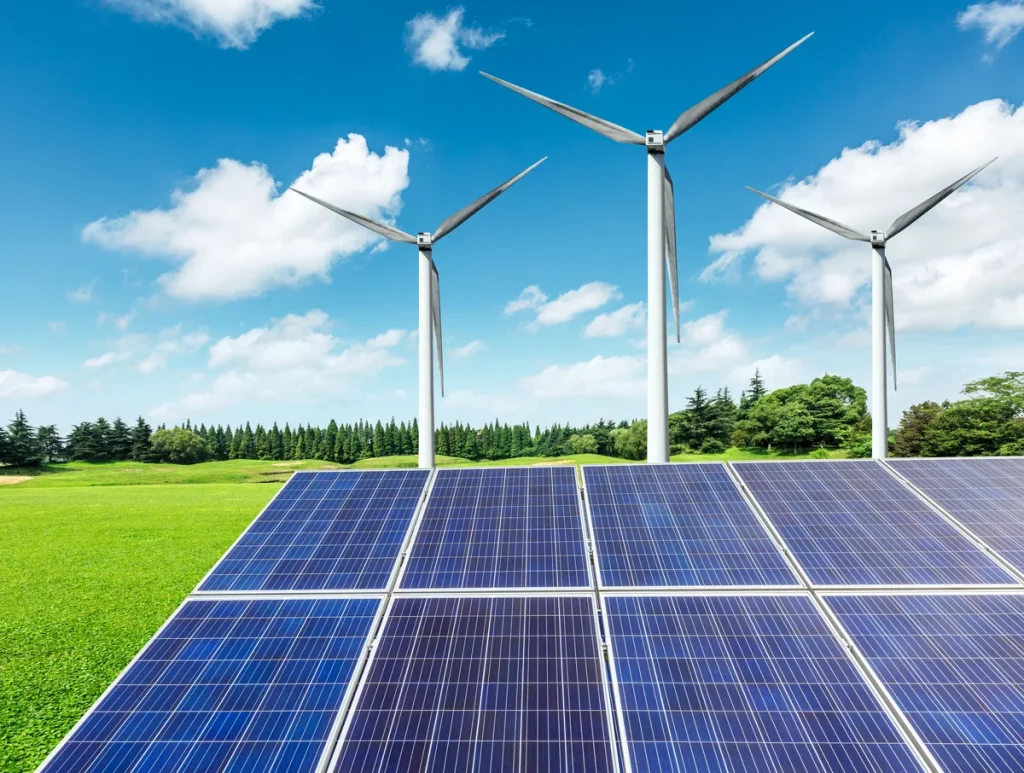What Is a Carbon Footprint is one of today’s most discussed sustainability topics. It refers to the total amount of greenhouse gases emitted into the atmosphere as a result of human activities. This concept helps us understand the environmental impact caused by individuals, organizations, and nations. Every action—from commuting to work and using electricity to the food we consume—affects our carbon footprint.
Understanding the carbon footprint not only raises environmental awareness but also shapes our economic, social, and ethical responsibilities. Every small reduction directly contributes to the planet’s future.
Table of Contents
- What Is a Carbon Footprint?
- Types of Carbon Footprints
- How to Calculate a Carbon Footprint
- Ways to Reduce Your Personal Carbon Footprint
- Corporate Carbon Footprint Reduction Strategies
- Reducing Carbon Footprint in Transportation
- Achieving Zero-Carbon Energy Consumption
- Sustainable Consumption and Food Choices
- Summary
- FAQ (Frequently Asked Questions)
What Is a Carbon Footprint?
A carbon footprint represents the total amount of greenhouse gases—mainly carbon dioxide (CO₂), methane (CH₄), and nitrous oxide (N₂O)—emitted by an individual, organization, or country. It’s primarily determined by energy use, transportation, food consumption, and production processes.
This concept is a key indicator in understanding climate change. For example, driving to work, using household electricity, or buying products with energy-intensive manufacturing all contribute to your carbon footprint.
There are two main components:
- Direct emissions: Gases emitted directly by individuals or organizations (e.g., car exhaust).
- Indirect emissions: Emissions produced during electricity generation or product manufacturing.

Types of Carbon Footprints
Carbon footprints are classified by their source and scope. This helps us identify which activities have the greatest impact.
1. Personal Carbon Footprint
Includes personal energy use, transportation habits, diet, and shopping behavior. For example, someone who eats a lot of red meat generally has a higher footprint than someone with a plant-based diet.
2. Corporate Carbon Footprint
Covers company activities such as production, supply chain management, and energy use. Many organizations calculate and report this data in sustainability reports.
3. Product Carbon Footprint
Measures total greenhouse gas emissions generated throughout a product’s life cycle—from production and transport to use and disposal.
| Type | Scope | Example Activity | Impact Level |
|---|---|---|---|
| Personal | Transport, diet, energy | Driving, eating meat | Individual |
| Corporate | Manufacturing, office energy | Factory, data center | Organizational |
| Product | Full life cycle | Electronics, clothing | Global |

How to Calculate a Carbon Footprint
Calculating a carbon footprint is the first step toward creating a sustainability plan. It shows the total greenhouse gas emissions over a given period—usually one year—expressed in tons of CO₂ equivalent (tCO₂e).
Steps to Calculate:
- Collect data: Gather information such as energy bills, fuel use, mileage, and diet.
- Apply emission factors: Use standard emission factors published by environmental agencies.
- Add it all up: Combine all sources to determine your total carbon footprint.
| Activity | Usage | Emission Factor | Result (kg CO₂e) |
|---|---|---|---|
| Electricity use | 300 kWh | 0.475 | 142.5 |
| Gasoline | 50 L | 2.31 | 115.5 |
| Meat consumption | 10 kg | 27 | 270 |
| Total | 528 kg CO₂e |
Ways to Reduce Your Personal Carbon Footprint
Each individual can reduce their footprint by changing daily habits. Even small steps make a significant difference over time.
Practical Steps:
- Use public transport: Reduce personal vehicle use.
- Save energy: Use LED lighting and unplug unused devices.
- Recycle: Separate waste and choose reusable products.
- Practice digital minimalism: Reduce unnecessary data storage, as data centers consume large amounts of energy.
- Eat more plants: Shifting toward plant-based diets can cut emissions by up to 30%.
Common mistake: Many believe small actions don’t matter—but collectively, they do. Energy efficiency, waste reduction, and water conservation together form an effective low-carbon lifestyle.

Corporate Carbon Footprint Reduction Strategies
Businesses generate significant emissions but can reduce them through responsible management and innovation.
Key Strategies:
- Invest in energy efficiency: Use LED lighting, motion sensors, and monitoring systems.
- Sustainable procurement: Choose suppliers committed to carbon reduction.
- Remote work policies: Cut commuting emissions.
- Carbon offset programs: Support reforestation or renewable energy projects.
- Waste reduction plans: Promote recycling and minimize single-use materials.
| Area | Traditional Approach | Sustainable Approach |
|---|---|---|
| Energy | Fossil fuels | Renewable energy |
| Work model | Office-based | Hybrid or remote |
| Production | Waste-intensive | Circular economy |
| Supply chain | Cost-driven | Environment-driven |
Reducing Carbon Footprint in Transportation
Transportation accounts for about 25% of global carbon emissions. Choices made here greatly influence environmental impact.
Effective Methods:
- Choose public transport whenever possible.
- Support cycling and walking infrastructure.
- Switch to electric vehicles where feasible.
- Use car-sharing systems for common routes.
- Limit air travel for short distances.
| Fuel Type | CO₂ Emission per km (g) | Environmental Impact |
|---|---|---|
| Gasoline | 180 | High |
| Diesel | 150 | Medium-High |
| Hybrid | 90 | Medium |
| Electric | 40 | Low |

Achieving Zero-Carbon Energy Consumption
Energy use is the largest contributor to carbon emissions. Adopting a “zero-carbon energy” model can transform both individual and corporate practices.
Key Actions:
- Switch to renewable sources like solar, wind, and geothermal.
- Use energy-efficient devices (A+++ rated).
- Implement smart energy systems with sensors and timers.
- Improve building insulation to reduce heating and cooling losses.
| Energy Source | CO₂ Emission (g/kWh) | Renewable Level |
|---|---|---|
| Coal | 820 | Low |
| Natural gas | 490 | Medium |
| Solar | 45 | High |
| Wind | 12 | High |
| Hydropower | 24 | High |

Sustainable Consumption and Food Choices
Our consumption habits directly affect our carbon footprint, especially through food production and waste.
More Sustainable Eating Habits:
- Choose plant-based foods with lower carbon intensity.
- Buy from local producers to reduce transportation emissions.
- Avoid food waste: Buy only what you need.
- Eat seasonally: Avoid high-energy greenhouse-grown products.
| Food Type | Carbon Emission (kg CO₂/kg) | Alternative |
|---|---|---|
| Red meat | 27 | Legumes |
| Poultry | 6.9 | Tofu, plant protein |
| Milk | 3.2 | Plant-based milk |
| Vegetables | 2.0 | — |

Summary
Your carbon footprint reveals the real environmental impact of your lifestyle. By improving energy use, transportation, and food choices, you can significantly reduce emissions.
Renewable energy, recycling, and mindful consumption are essential building blocks of a low-carbon future.
FAQ (Frequently Asked Questions)
It measures the impact of human activities on climate change and guides sustainable action.
Energy production and transportation together account for the largest share of global emissions.
Use online carbon calculators that consider your energy, fuel, and food consumption.
Meat production emits methane and requires large amounts of water, increasing overall emissions.
It means compensating for emitted greenhouse gases by supporting reduction projects such as reforestation or renewable energy.
They follow global standards like ISO 14064 or the GHG Protocol to prepare annual reports.
They produce no direct emissions, but total impact depends on battery production and electricity source.
It means the total emissions produced are offset, resulting in a net-zero balance.
It lowers the need for new raw materials, reducing both energy use and emissions.
Turning off lights, using public transport, buying local food, and reducing plastic use.
Calculate your carbon footprint today and start your journey toward a greener life. Small actions can make a big difference—your choices matter!
Take your first step toward a sustainable future now.







